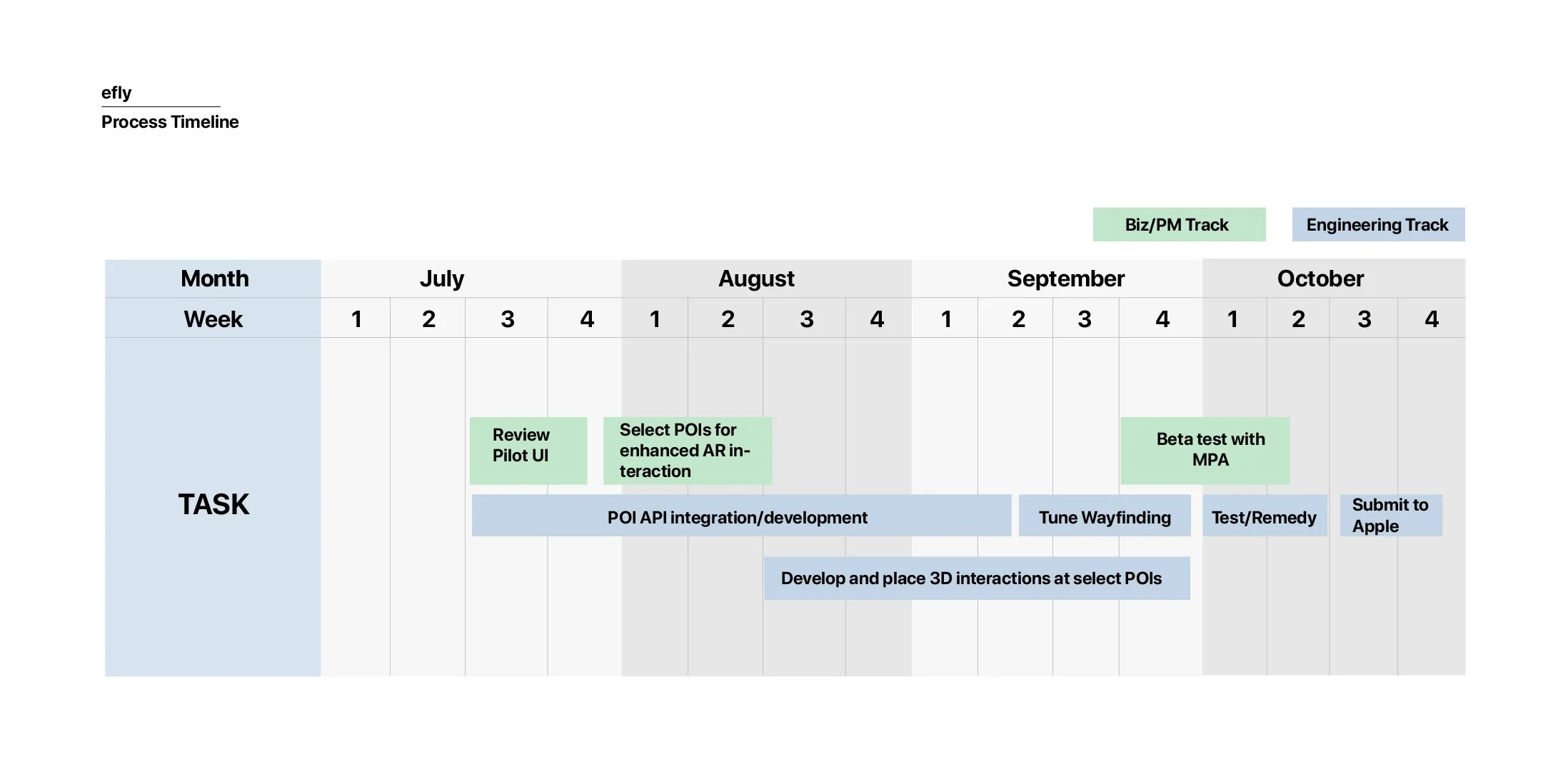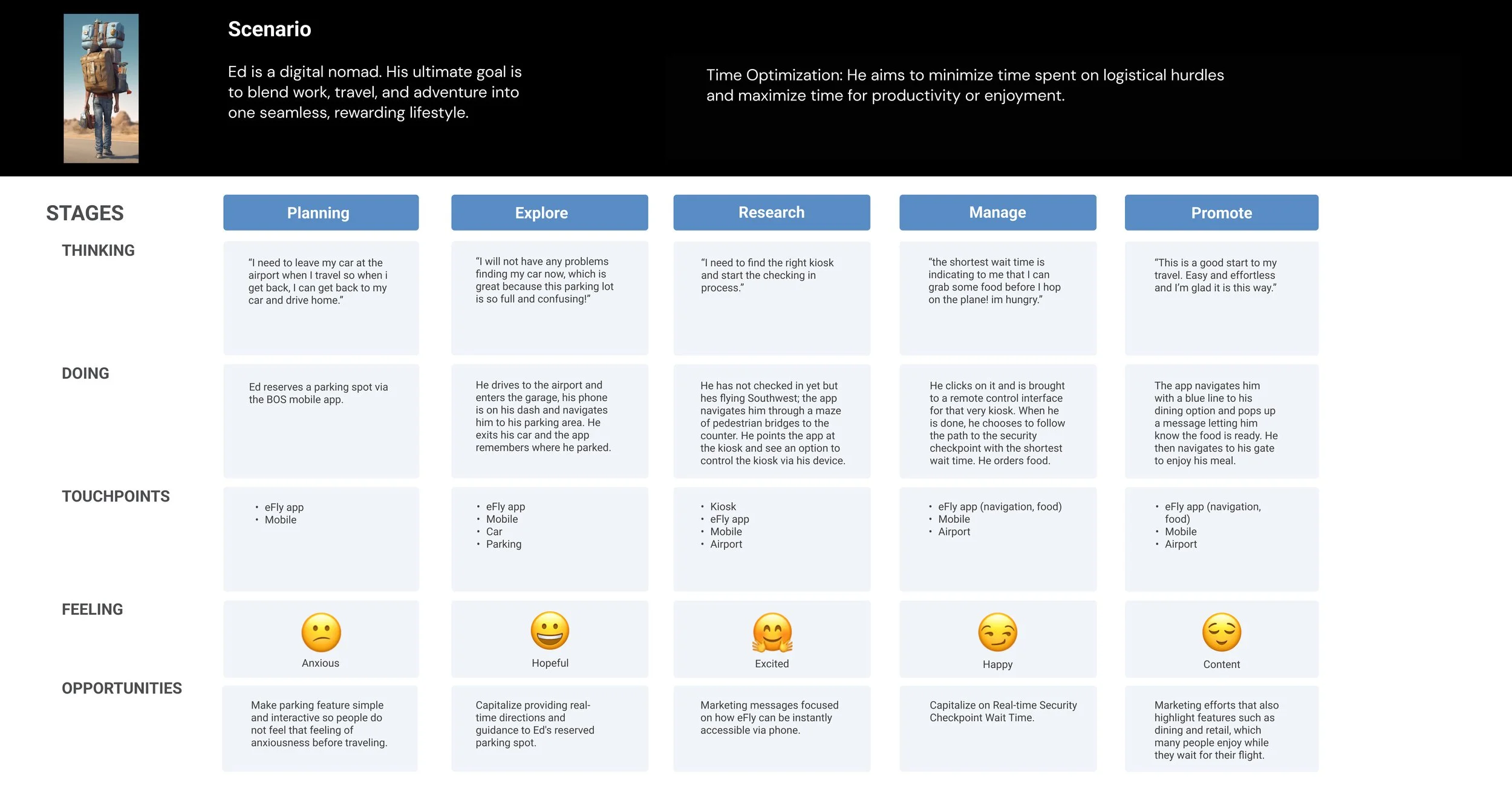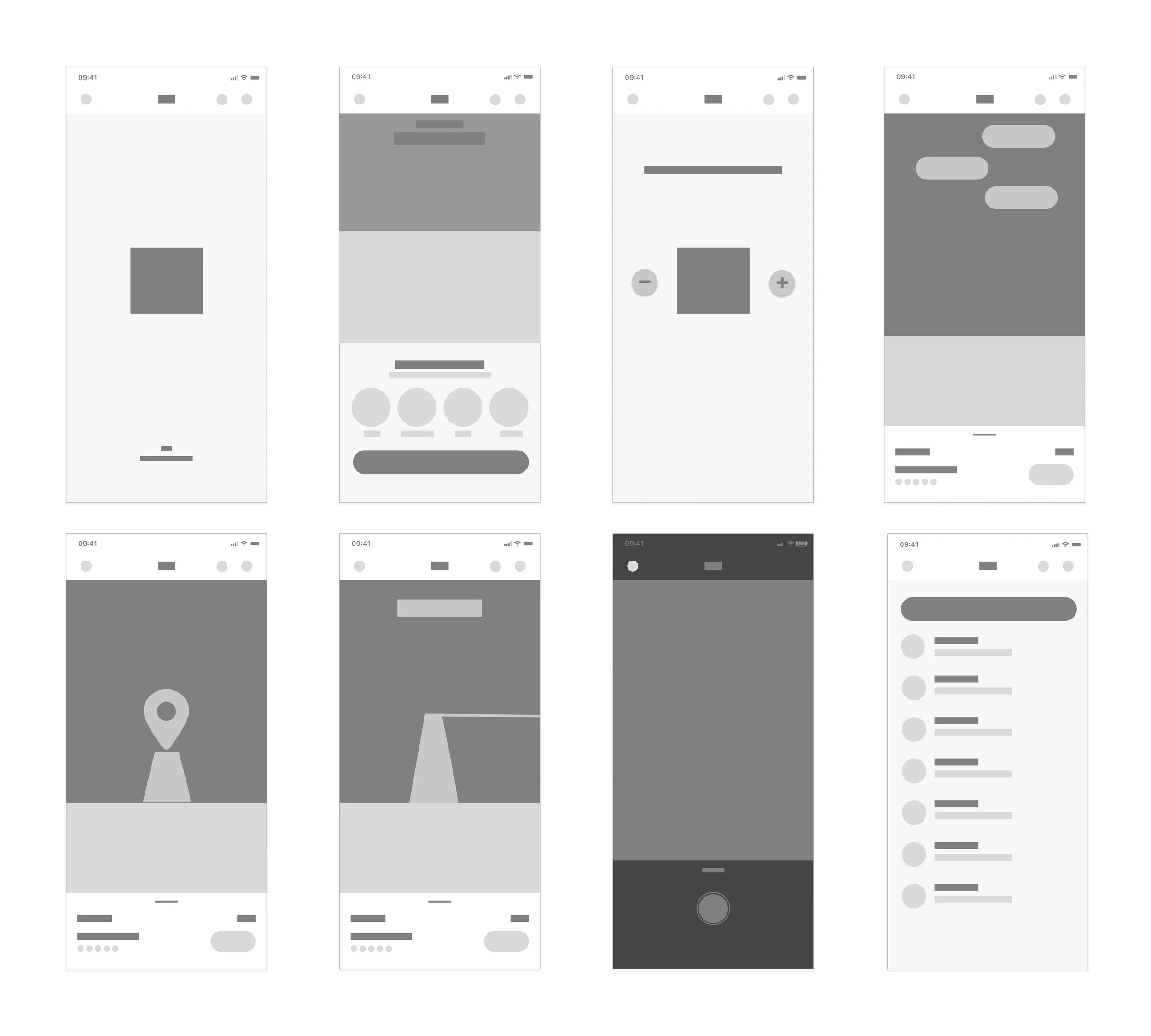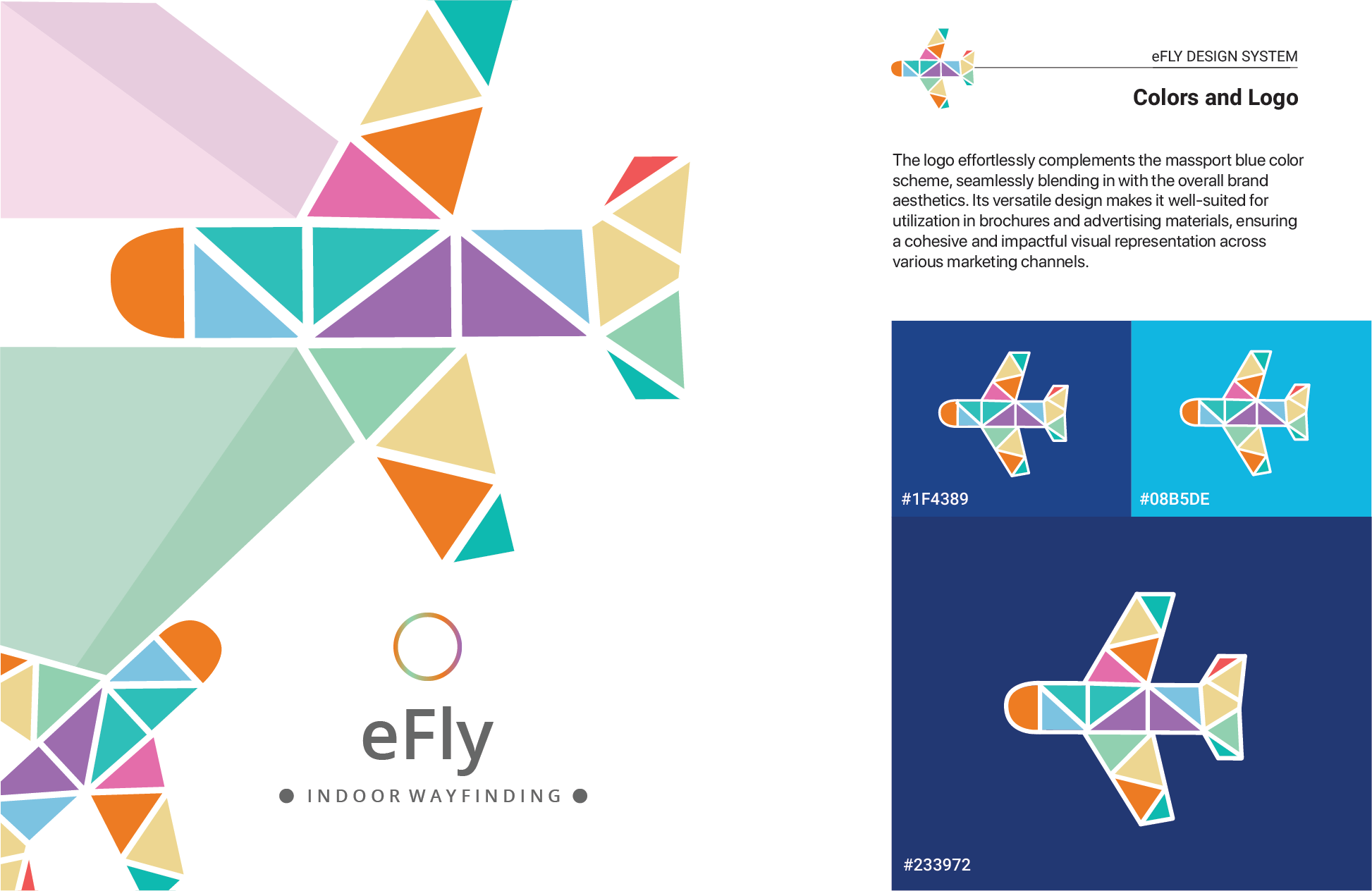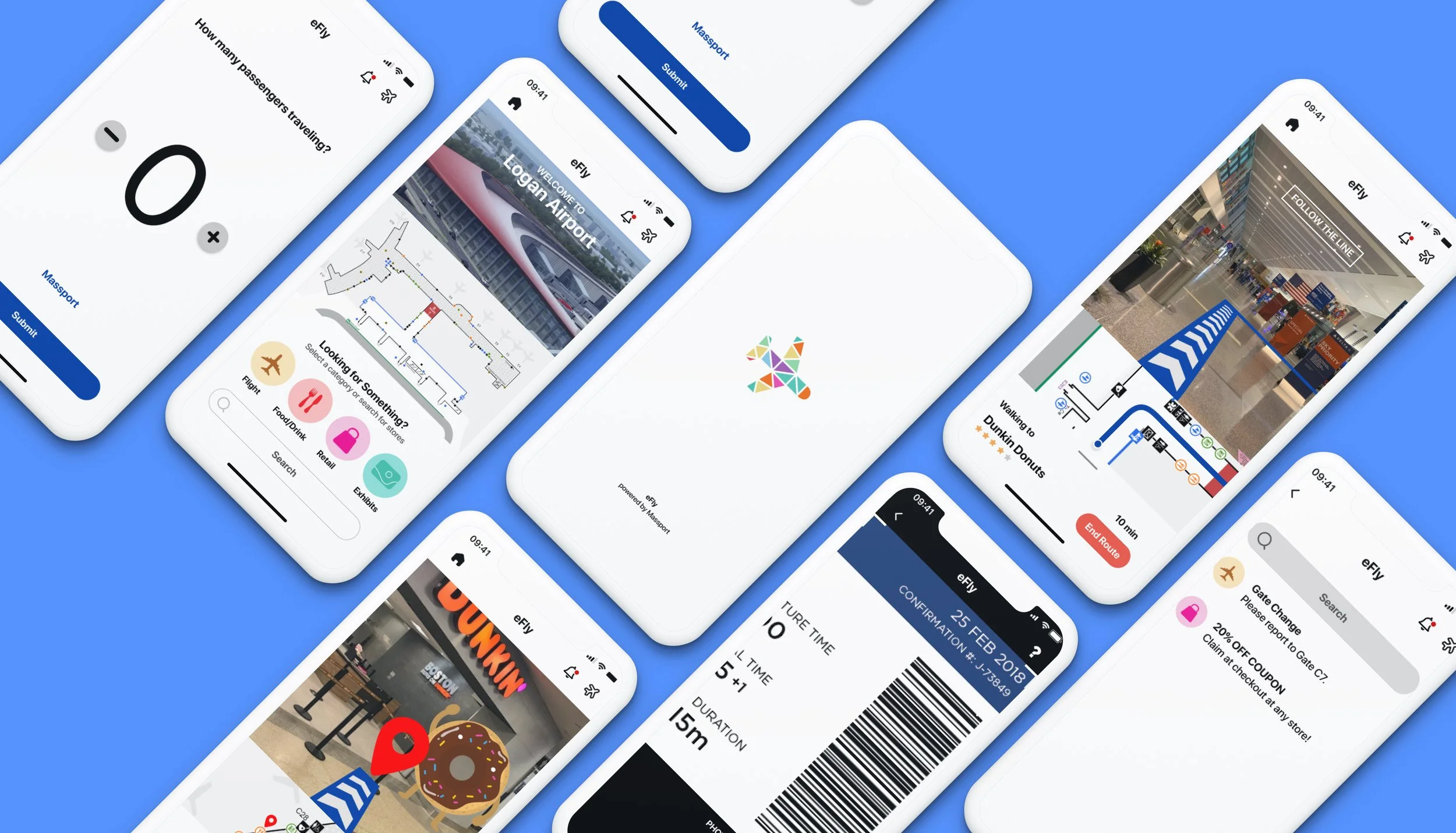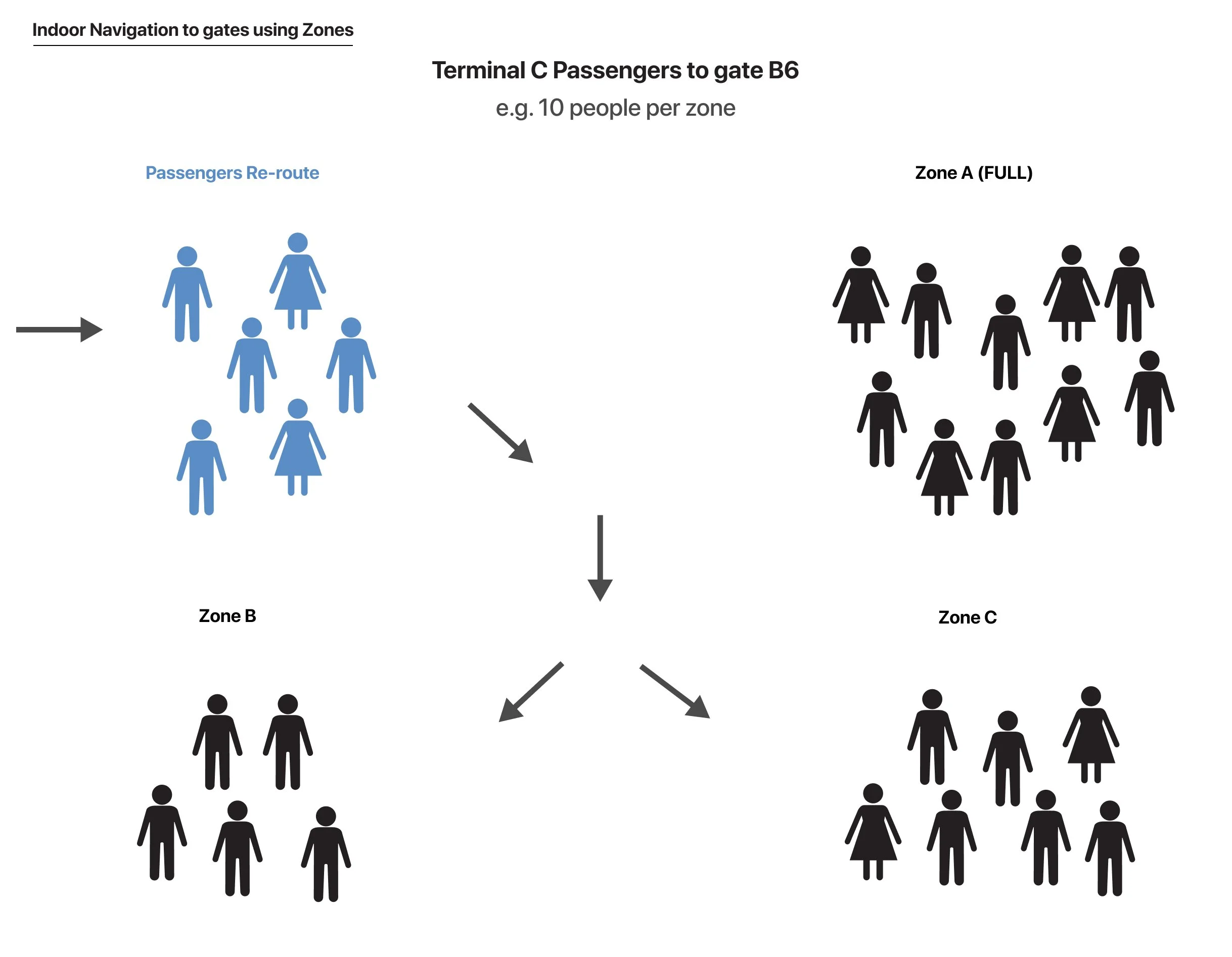
eFly
A wayfinding solution for airports
Duration of App: Ongoing
The purpose of this project is to develop an innovative Augmented Reality (AR) wayfinding and information application for Massport, specifically Boston Logan Airport. The application aims to enhance passenger experiences, streamline airport navigation, provide real-time information, and increase operational efficiency. By seamlessly integrating the digital and physical environment, the application will revolutionize airport navigation, reduce passenger stress, promote informed travel, and optimize airport operations, setting a new standard for the future of passenger experience and airport efficiency.
Historically, airport mobile application adoption has been historically low across the industry due to factors such as availability of alternative travel apps, infrequent use, lackluster user experience, lack of personalization, poor marketing, and data privacy concerns. To increase adoption rates, airport apps would need to improve user interfaces, offer real-time personalized info, integrate with popular travel apps, ensure data privacy, and provide additional benefits like exclusive offers or seamless Wi-Fi access.
No airport is doing AR well or completely. This platform can position BOS to be a leader and innovator in this space.
Role
A team of three and Art of Context, I assumed the roles:
User Experience (UX) Designer
User Interface (UI) Designer
Research
Deliverables
MPA Innovation Program Proposal for Logan Airport (Boston) including:
Innovative technology research
Wayfinding solution pilot sketches and mockups
Pilot timeline development
Assessing Costs/risks
Tools
Figma
Illustrator
Photoshop
Octopus
Balsamiq
Trello
Blender
Pilot Timeline
From sketches to a finished product it has been assessed that it will take approximately 3 months to have the fully functioning pilot.
eFly
Airport Wayfinding
Client: Massport
Airports, bustling hubs of travel and connectivity, serve as gateways to countless destinations around the world. With a multitude of terminals, gates, and services, airports can sometimes feel like intricate mazes to navigate. Travelers often face challenges in finding their way efficiently, locating facilities, and staying updated with important information. A well-designed wayfinding app can transform these experiences by providing intuitive directions, interactive maps, and relevant details about amenities, flight updates, and services. It simplifies the journey, enabling travelers to navigate with confidence, save time, and enjoy a more seamless and enjoyable travel experience.
Goals
Augmented Reality navigation/information pilot for purposes of proving the potential of this compelling mobile platform.
Enhanced passenger experience that leads to increased revenue
Enable airports to instantly communicate with passengers and to collect valuable behavior data
Low cost to implement
Easy to manage, no hardware
Proposed Features
The Pilot will allow AR navigation to points of interest (POIs) including: gates, shopping, dining, facilities and exhibits
Use 2D (apple maps) and augmented reality technologies to seamlessly guide passengers to their destination within terminals such as gates and security checkpoints
It will test the efficacy of indoor navigation without using beacons
It will demonstrate at least two augmented POIs with 3D objects and or menus etc. The team will work with Massport to identify and coordinate these opportunities
Integrates digital information with the user’s environment in real time capturing indoor spaces and turning them into rich spatial data
Indoor mapping, positioning and analytics to power navigation, drive retail activity and gain valuable indoor intelligence for the airport
The Pilot will be downloadable in Apple Store

"Effective wayfinding is the invisible hand that guides travelers smoothly on their journey, making airports less of a maze and more of a gateway to the world. A stellar wayfinding solution should be like a whisper in a traveler's ear, quietly affirming, 'This way. You're on the right path.'"
Research
I started my research with competitive analysis in order to analyze what apps have already explored indoor wayfinding capabilities. I also leveraged Massport data to understand people traffic, especially for terminal C, the chosen terminal for the pilot testing. And lastly, I conducted one-on-one interviews on my site visit to the airport which helped me uncover user personas and journeys.
Relevant Findings
Availability and Coverage: Indoor maps are not up to date and not all locations have indoor mapping available
Accuracy: Indoor GPS and mapping can be less accurate due to the complexity of indoor environments and limitations of current technology
Availability: Only available for iOS users, or android users only
Low adoption rate: limited awareness and or infrequent usage
Personas
Design decisions centered around user needs
After establishing our objectives and executing comprehensive market research, we turned our attention towards understanding the quintessential traveler, their needs, and their challenges. We concluded that there is a shared goal amongst all travelers — to navigate the airport effortlessly, saving energy typically wasted on unnecessary stress and confusion. We also recognized that passengers often arrive early for their flights, endure layovers, and at times spend significant periods waiting. By delineating these universal behaviors, we harnessed the power of persona-driven design, allowing these representative travelers to guide our design choices and feature development moving forward.
Hassle-Free Voyager
Journey Map
Understanding user flow
Creating the journey map of the ideal traveler contributed the comprehensive understanding of the user’s experience, capturing their emotions, pain points and motivations. By visualizing this journey, it ensured that the design remained user-centric and focused on delivering a delightful experience for the ideal traveler.
Sketches
Early studies
The sketch phase was instrumental in understanding the key components of the wayfinding pilot. It allowed me to brainstorm and explore various design ideas freely. Rapid prototyping through hand sketches helped me iterate and refine concepts quickly and served as an effective communication tool to share ideas with team members from the start. By leveraging hand sketches, we gained insights into the user’s needs and challenges, laying a strong foundation for the low fidelity prototyping that occurred in the next step.
Low Fidelity
Digitalizing the sketches
After sketching, I began to experiment with low fidelity wireframes. These revealed some important points regarding usability, iconography and app flow. Most notably, we were able to conceptualize what the proposed main features of the pilot was going to look like.
Design System
Colors, Logo and Font
Beta Prototype
Potential Integrations
Future Implementation
Boarding Pass Scanner: Recognizes PDF417 barcodes and temporarily stores collected passenger information on the device.
Indoor Navigation To Gates Using Zones: Passengers will be dispersed so that every given area or gate within the airport is not overly crowded.
Voice directions Visually Impaired: Offer voice direction to the desired destination, including gates and local amenities.
Language Translation: The app allows for multiple languages.
Security Checkpoint Wait Times: TSA wait times will be provided to the passenger on both mobile and web platforms.
Floor/Building Transition: Automatically detect when passengers enter/exit buildings or change floors with no lag time.
Push Notifications: Push notifications can be enabled by the user to alert them of any delays.
Welcome to Logan Airport.
At this stage, our focus is on testing core functionalities like dynamic AR features and data integration. We are prioritizing functionality and user experience before diving into the UI/UX of the app. Join us as we gather valuable insights to refine and enhance our product, ensuring an exceptional user experience.
